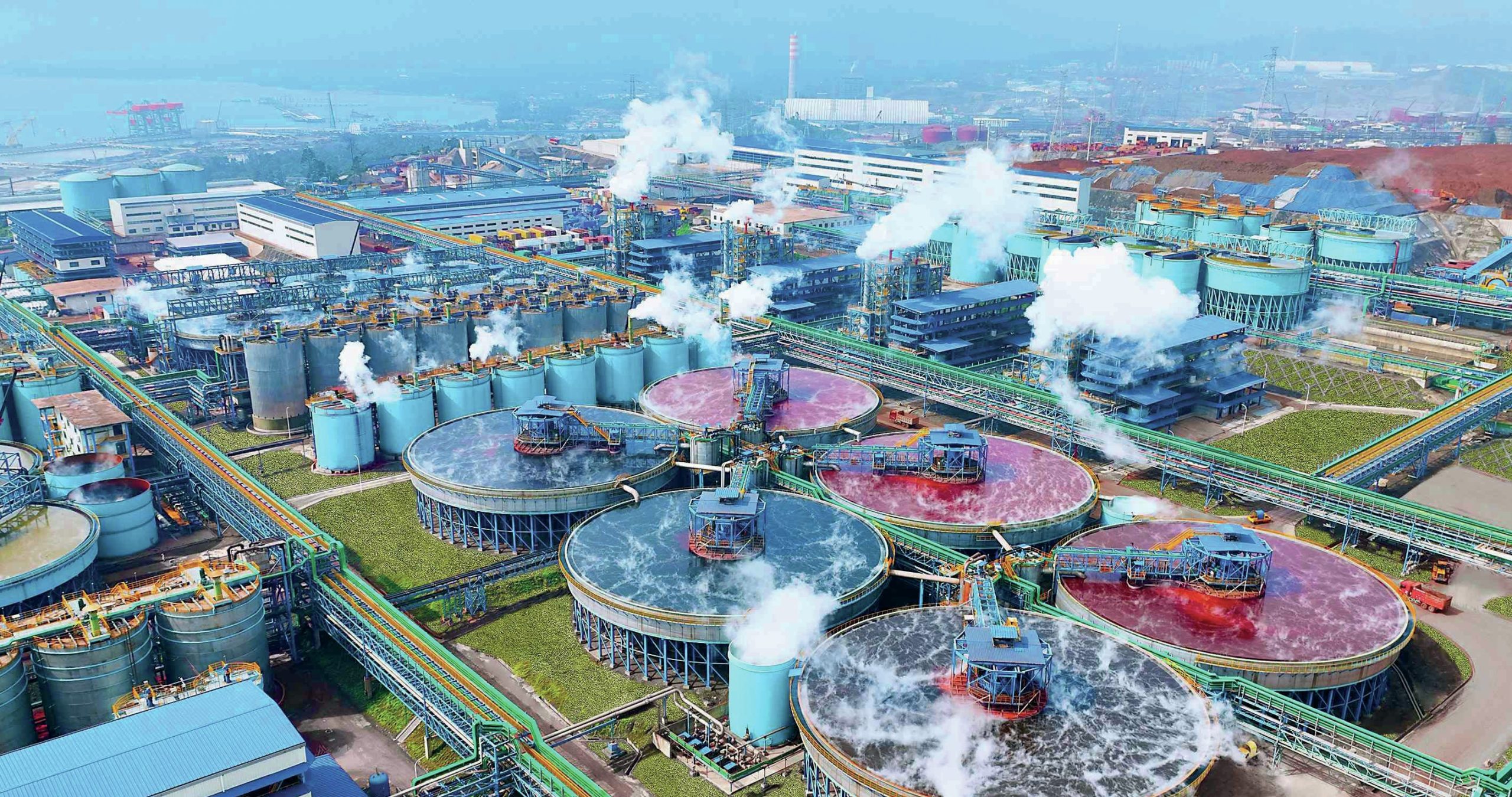Fertilizer International 525 Mar-Apr 2025

18 March 2025
Market Insight
Market Insight

PRICE TRENDS
Market snapshot, 20th February 2025
Global inactivity sparks urea declines. The urea market has been jittery in response to delays in the India tender announcement. This has been noticeable in the US, where the February price fell to $380/st f.o.b. NOLA. Most attribute the slide to trader nerves in the absence of the India announcement, with sellers quickly agreeing to lower values.
The Brazil benchmark has proved more resilient with a trade at $450/t cfr. Demand is underwhelming, however, and sales are proving the exception rather than the rule.
January urea sales in India, meanwhile, surged by 29% year-on-year, totalling 4,559,000 tonnes compared to 3,543,000 tonnes in January 2024. This has reduced inventory by 1.3 million tonnes to just below 4.5 million tonnes at the start of February.
Ammonia on downwards path. Globally, the price direction for ammonia is still downwards, with healthy supply more than sufficient to cover the limited demand seen across most regions. The exception remains NW Europe, where interest is supporting prices in the face of a generally weak wider market.
News of a $459/t cfr sale into Morocco by Trammo may weigh on prices in coming weeks. A rollover or slight decline on $500/t cfr agreed for February has been mooted for the March Tampa settlement. That could place pressure on US Gulf values, while clarity on the status of 1.3 million t/a capacity Gulf Coast Ammonia (GCA) project is awaited.
East of Suez, continued length in the Middle East has pushed prices towards the $300/t f.o.b. mark, with little support expected heading into March. Ma’aden plans to export 200,000 tonnes in March – up 50,000 tonnes on February. Just over a third of that total is earmarked for India, where FACT issued a fresh purchase tender for up to 15,000 tonnes
Tight availability supports DAP/MAP prices. DAP and MAP prices continue to be supported by exceptionally tight availability, with several benchmarks assessed higher, while others were stable. The latest deal to India was up at $636/t cfr. Spot prices were assessed up at $632-636/t cfr following five weeks at $632-633/t cfr. While Indian importers face steep losses buying at these prices – under the current subsidy regime – exceptionally low DAP stocks in the country are creating pressure to buy.
Unverified reports, meanwhile, suggested the long-discussed India-Morocco phosphate supply deal for DAP and TSP may have been finalised, although this had not been confirmed at the time of writing.
Prices for DAP and MAP barges at New Orleans also continued to increase, while the DAP premium over MAP widened. Prices were also higher for Moroccan MAP exports, Tunisian DAP exports, and DAP imports to Argentina/Uruguay.
Bullish potash outlook bolstered by Uralkali. Potash prices rose in China, Brazil and the US, while other regions saw little change, as Pupuk Indonesia closed two tenders and Uralkali announced a cut in second quarter production.

The Southeast Asia MOP market took the spotlight this week as Pupuk Indonesia closed two tenders. The importer received five offers from suppliers for their 20,000 tonnes sMOP tender, ranging from $335-360/t cfr for May shipment, while its gMOP tender received six offers, ranging between $335-435/t cfr. Neither tender has been reported as awarded at the time of writing.
In other news, Uralkali plans to cut MOP production by 300,000 tonnes at its Berezniki-2, Berezniki4, and Solikamsk-3mines for maintenance in the second quarter. CRU does not expect this to support significant price increases.
Sulphur prices increase in China, flat elsewhere. In China, domestic port stock and international offers have risen to above $200/t cfr, despite a lack of fresh import deals. The Indonesia price was assessed flat but sentiment is bullish, with a 150,000 tonne Huayou tender expected to push prices higher. All other benchmarks were assessed flat amid muted market activity.
Since the Lunar New Year celebrations, no fresh import deals for China have been reported. As a result, Indonesia has played a key role in supporting prices by continuing to purchase, mainly from the Middle East. Consequently, other delivered markets have had to adjust their prices to align with f.o.b. prices from the Middle East.
In India, subdued demand has kept prices flat. The market there is expected to remain steady until demand recovers around April in preparation for the Kharif season. Activity in Brazil has also been restricted by weak demand. Consequently, prices from the US Gulf have also remained flat as Brazil is one of its primary delivered markets.
OUTLOOK
Urea prices firming. Urea prices are expected to remain firm and keep climbing in February. India has taken just over half a million tonnes out of the market for February loading. The US has yet to step up but Australia is already paying higher prices and increased demand is anticipated in March. European and Turkish interest is supporting North African prices as Iran remains largely closed. Upside risks also abound. A surge in US interest, a return to the market by India, a move by Australia to secure March tonnes – as well as continued buying in Europe and Turkey – could all see urea prices move higher than forecast.
Softening ammonia market. The price declines that began in January are expected to continue in ammonia markets east and west of Suez, against a backdrop of assured short-term supply and only limited pockets of regional demand. Delays to the commissioning of new capacity in the US Gulf and Black Sea could, however, moderate forecast declines, while potential US tariffs on Canadian ammonia imports could also provide indirect support for future Tampa price settlements. Similarly, a further run-up in natural gas prices in NW Europe could prompt further regional shutdowns and pave the way for an uptick in import demand.
Potential for slight phosphate price declines. Phosphates prices are expected to remain stable in the first quarter, with tight supply offsetting limited demand and overcoming affordability concerns, while slight declines are likely in the second quarter as availability improves. A lack of exports from China is expected to add support to bullish first quarter sentiment in global markets. Supply from China should pick up in the second quarter, however, giving buyers another supply option. OCP has already increased its production and sales significantly. Exports from Morocco may therefore be higher than previously expected, particularly in the early months of 2025.
Potash price forecast revised upwards. Globally, CRU is currently forecasting higher short-term potash prices, particularly in the US, driven by a risk premium. This is centred on the prospects for US tariffs on Canadian potash and lower production from Belarus. Canada currently supplies around 80% of US MOP needs. With a healthy volume of potash already in US warehouses, the price impacts of tariffs – should they materialise – are likely to emerge later rather than sooner. CRU expects the 180-day India potash contract negotiations to begin soon, with a potential settlement of $300/t cfr in June.
Gradual sulphur price decline. In an upwards revision, sulphur prices are now expected to either plateau or increase slightly through February before decreasing into March. While the overall trend remains unchanged, price falls during the first half of 2025 are now expected to be more gradual into June. However, prices may not follow this expected pattern, if global markets behave reactively to US import tariff announcements.




